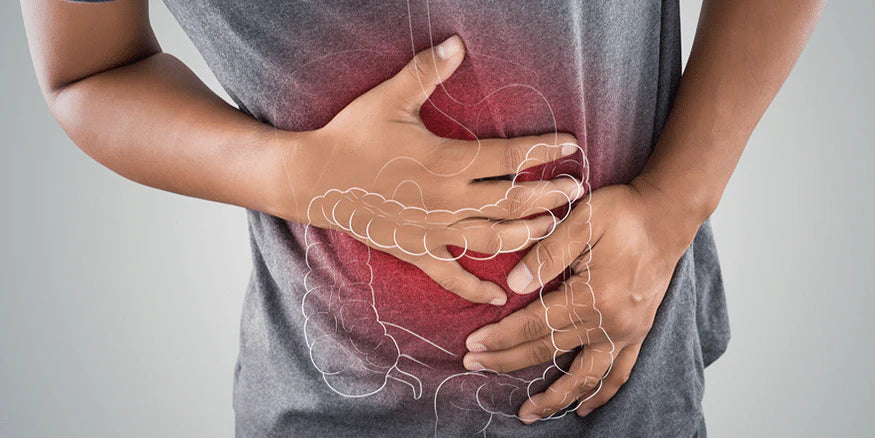
Constipation After Antibiotics: Rebuilding Gut Balance
|
|
Time to read 5 min
|
|
Time to read 5 min
Antibiotics can feel like a lifesaver when you’re dealing with an infection. But once the treatment ends, some people face an unexpected and uncomfortable side effect: constipation. In this article, we’ll break down why constipation happen after antibiotics, how your gut bacteria play a role, and the most effective natural and medical ways to rebuild gut balance.
Disclaimer: The information provided in this blog post is for general knowledge and informational purposes only, and does not constitute medical advice. Always consult with a qualified healthcare professional before making any decisions about your health or treatment. If you experience persistent or severe acid reflux, seek medical attention immediately.
Antibiotics are powerful at fighting infections, but they’re not selective about which bacteria they kill. While they target harmful bacteria, they also wipe out beneficial gut bacteria.
When your gut microbiome gets out of balance, your bowel movements can slow down, leading to constipation. In some cases, you might also notice bloating, discomfort, or changes in stool consistency.
Here are the key reasons for constipation after antibiotics:
Loss of beneficial bacteria that help break down food.
Slowed bowel motility due to disrupted gut-brain signaling.
Dietary changes while you’re unwell (less fiber, less movement).
Dehydration from illness or medication side effects.
Before reaching for harsh laxatives, it’s worth trying natural methods to restore gut balance for constipation relief.
Fiber acts like a sponge in your digestive system - it soaks up water, bulks up stool, and helps it move through your intestines more easily. Aim for 25-30 grams daily from:
Whole grains such as oats, quinoa, and brown rice
Fruits like pears, prunes, kiwis, and berries (especially those with edible skins)
Vegetables such as spinach, broccoli, carrots, and Brussels sprouts
Gradually increase fiber to avoid gas and bloating, and always pair it with plenty of fluids for best results.
Without enough water, stool can become dry and hard, making constipation worse. Aim for at least 8-10 cups of fluids daily. In addition to plain water, you can sip:
Herbal teas (peppermint, chamomile, ginger) to soothe digestion
Warm broths to add hydration and electrolytes
Coconut water for a natural potassium boost
Antibiotics can wipe out the friendly bacteria that help keep bowel movements regular. Probiotics reintroduce these beneficial microbes. You can get them from:
Yogurt with “live and active cultures” on the label
Kefir , a fermented milk drink rich in multiple probiotic strains
Fermented vegetables like sauerkraut, kimchi, and pickles (made without vinegar)
Probiotic supplements in capsule or powder form (choose multi-strain formulas for broader gut support)
Consuming probiotics daily for at least 2-4 weeks can help restore microbial diversity and ease constipation.
Still not sure what’s causing your constipation or digestive changes? Keep a food and symptom diary and take Claisen’s free quiz for personalized insights - it’s a quick way to start connecting the dots.
When you’re sick and resting, your gut slows down. Exercise, even light forms, stimulates peristalsis, the wave-like muscle contractions that move stool through your intestines. Consider trying:
A 15–30 minute walk after meals
Gentle yoga poses like “Wind-Relieving Pose” or “Cat-Cow”
Stretching and light bodyweight exercises
Consistency matters - even small amounts of daily movement can re-train your digestive system and ease constipation.
Drinking warm water first thing in the morning can wake up your digestive system. Adding lemon provides a gentle dose of vitamin C and acidity, which may stimulate bile production and help move stool along.
For extra benefit, follow it with a short walk or some light stretching to further encourage bowel activity.
If constipation doesn’t improve after a few days of home care, your doctor may recommend targeted treatments to get your digestion back on track while your gut recovers.
Osmotic laxatives work by drawing water into the intestines, softening the stool and making it easier to pass, hence easing constipation. Unlike stimulant laxatives, they don’t force the bowel to contract, which makes them gentler for sensitive digestion.
Common examples include polyethylene glycol (PEG) and lactulose. They can be effective for short-term use, but it’s important not to overuse them, as your body may become reliant on them for bowel movements.
Stool softeners like docusate sodium reduce surface tension in the stool, allowing water and fats to mix in. This makes the stool softer and easier to pass without excessive straining, especially helpful if constipation is accompanied by discomfort or mild hemorrhoids.
While over-the-counter probiotics can help, your doctor may recommend prescription-strength strains tailored to restoring gut diversity after antibiotic use. Some clinical-grade probiotics contain specific species of Bifidobacteria and Lactobacillus that have been shown to improve stool frequency and consistency in post-antibiotic cases.
Suppose constipation continues for more than a week despite interventions. Your healthcare provider may investigate for underlying issues such as post-infectious irritable bowel syndrome (IBS), thyroid imbalances, or bowel motility disorders. Early detection ensures you get the right treatment before the issue worsens.
Constipation after antibiotics is common due to disruption of gut bacteria.
Restoring balance with fiber, hydration, probiotics, and gentle exercise often resolves the issue naturally.
If home remedies don’t help, osmotic laxatives, stool softeners, or prescription probiotics may be recommended.
Persistent constipation lasting over a week, or accompanied by severe symptoms, should be evaluated by a doctor.
Ready for personalized relief for constipation? Complete Claisen's gut health quiz to identify your unique triggers and receive evidence-based recommendations tailored to your digestive profile.
Usually, it resolves within a week or two once gut bacteria begin to rebalance.
Yes, starting probiotics during and after antibiotics can help maintain regular bowel movements.
It can be, especially if accompanied by other symptoms like blood in stool or severe pain, in which case, see a doctor.


